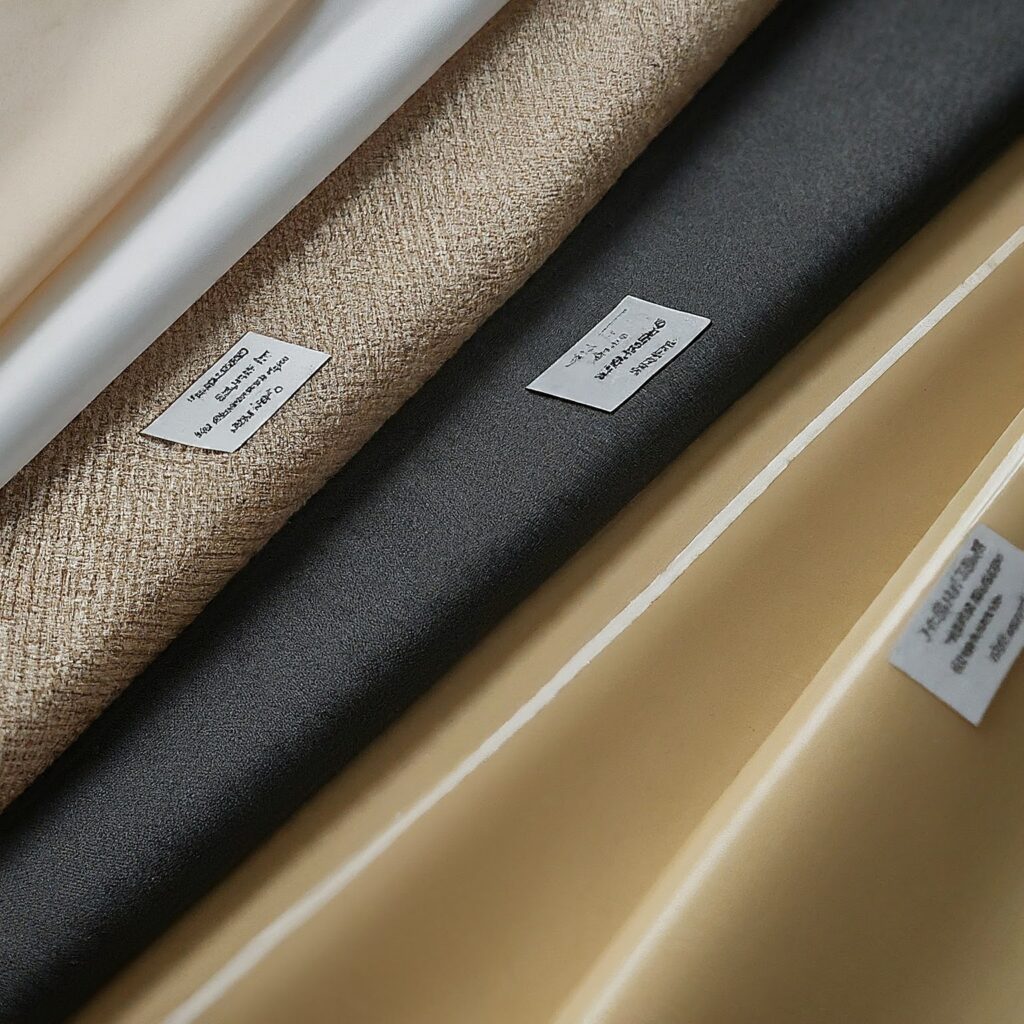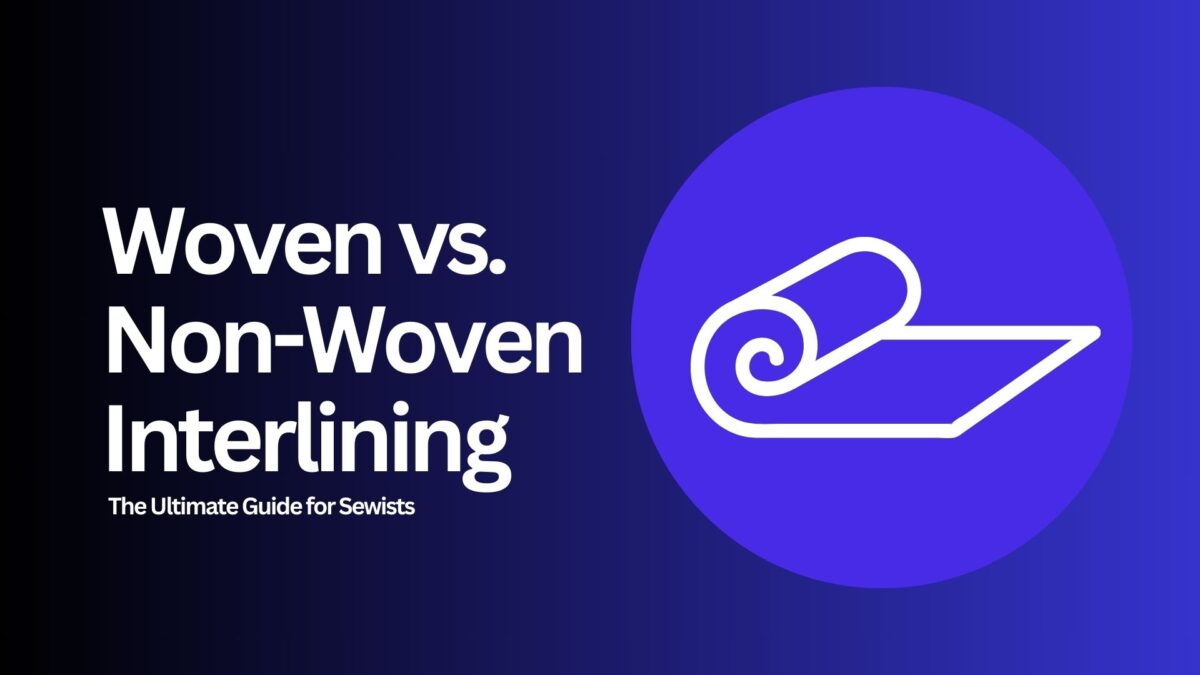Woven vs. Non-Woven Interlining: The Ultimate Guide for Sewists
Ever dreamt of creating garments with that perfect balance of structure and drape? Well, the secret lies in – interlining fabric! But with two main types – woven interlining and non-woven interlining – choosing the right one can feel overwhelming. Fear not, fellow sewist! This guide will break down the battle of non-woven interlining vs. woven interlining, helping you pick the perfect match for your next project.
Table of Content
- What is Interlining?
- What is Woven Interlining?
- What is Non-Woven Interlining?
- The Ultimate Showdown: Non-Woven vs. Woven Interlining
- Conclusion
What is Interlining?
Imagine a hidden layer that adds structure and stability to your garments, preventing them from becoming flimsy or sagging. That’s the magic of interlining fabric! It’s a fabric strategically placed between the outer fabric (like your beautiful silk) and the lining (the comfy cotton on the inside). Interlining fabric works its wonders in several ways:
- Provides structure and stability: Keeps collars, cuffs, and waistbands crisp, and prevents your garment from losing its shape.
- Enhances drape and shape: Helps your fabric fall beautifully, creating a polished and professional look.
- Adds body and weight: Gives certain garments, like jackets and blazers, a more substantial feel.

What is Woven Interlining?
Woven interlining fabric, as the name suggests, is constructed from finely woven threads. It’s been a trusted choice for generations of sewers, offering a reliable level of structure and stability.
Advantages of Woven Interlining Fabric:
- Crisp finish: Perfect for achieving sharp collars, cuffs, and tailored garments.
- Durable: Withstands wear and tear well, making it ideal for frequently worn pieces.
- Variety of weights: Available in various weights to cater to lightweight fabrics like silk or heavier fabrics like wool.
- Easy to find: A staple in most sewing stores.
Disadvantages of Woven Interlining Fabric:
- Can be bulky: For delicate fabrics like chiffon, woven interlining fabric might add too much stiffness and affect the drape.
- Less flexible: Not ideal for garments requiring a lot of movement, like activewear.
- Limited breathability: Densely woven options can trap heat, making them less suitable for summer garments.
What is Non-Woven Interlining?
Non-woven interlining fabric is a more modern option, made by bonding fibers together through heat, chemicals, or mechanical processes. This creates a fabric-like material with unique properties.
Advantages of Non-Woven Interlining Fabric:
- Lightweight and flexible: A great choice for delicate fabrics and garments that require movement, like activewear.
- Breathable: Allows for better airflow, making it ideal for summer clothing.
- More affordable: Generally less expensive than woven interlining fabric.
Wide range of options: Available in various weights, textures, and even fusible varieties that adhere to fabric with heat (non-woven fusible interlining).

Disadvantages of Non-Woven Interlining Fabric:
- Less structured: May not offer the same level of crispness as woven interlining fabric, especially in heavier weights.
- Not as durable: May break down over time, especially with frequent washing.
- Can be bulkier in heavier weights: While lighter than woven options, heavier non-wovens can still add some bulk.
The Ultimate Showdown: Non-Woven vs. Woven Interlining
Now that you know the strengths and weaknesses of each contender, let’s see when each shines:
When to Choose Woven Interlining Fabric:
- Structured garments: Tailored jackets, blazers, collars, cuffs, and waistbands that need a crisp finish (collar interlining).
- Heavier fabrics: Wool coats, structured bags, or garments requiring extra body.
- Classic look: For a timeless, polished look that mimics ready-to-wear garments.
When to Choose Woven Interlining Fabric:
- Structured garments: Tailored jackets, blazers, collars, cuffs, and waistbands that need a crisp finish (collar interlining).
- Heavier fabrics: Wool coats, structured bags, or garments requiring extra body.
- Classic look: For a timeless, polished look that mimics ready-to-wear garments
- Delicate fabrics: Silks, chiffons, or lightweight cottons that need a touch of structure without losing drape.
- Activewear: Leggings, yoga pants, or workout shirts that require flexibility and breathability.
- Summer garments: Dresses, blouses, or skirts where breathability and a lighter weight are important.
- Simple projects: Hem reinforcement, lightweight collars, or stabilizing buttonholes where a no-sew option (Non-woven fusible interlining) is preferred.
- Budget-friendly projects: When cost is a concern, non-woven interlining fabric offers a more affordable option.

Conclusion
Now you’re armed with the knowledge to choose the perfect interlining for your next project! Remember, the key lies in understanding:
- Fabric weight and drape: Match the interlining weight to your fabric for optimal results (woven interlining fabric for heavier fabrics, non-woven interlining fabric for lighter fabrics).
- Garment structure and function: Consider the level of structure and flexibility needed for the garment’s purpose (interlining in garments for structured jackets vs. fusible interlining for simple projects).
- Your sewing skills and preferences: Choose between sew-in (more control) or fusible (easier to use) options based on your comfort level .
Don’t be afraid to experiment! Grab some scrap fabric and try out different interlining types to see how they affect the drape and structure. With a little practice, you’ll be a master of interlining types, creating garments that not only look stunning but also function flawlessly.
So, Happy Sewing
Link of related Articles
- Woven Interlining: The Secret to Sharp Clothes
- Woven Interlining: The Classic Choice for Structured Garments
- how to sew with non-woven interlining
- Benefits of Using Non-Woven Fusible Interlining

